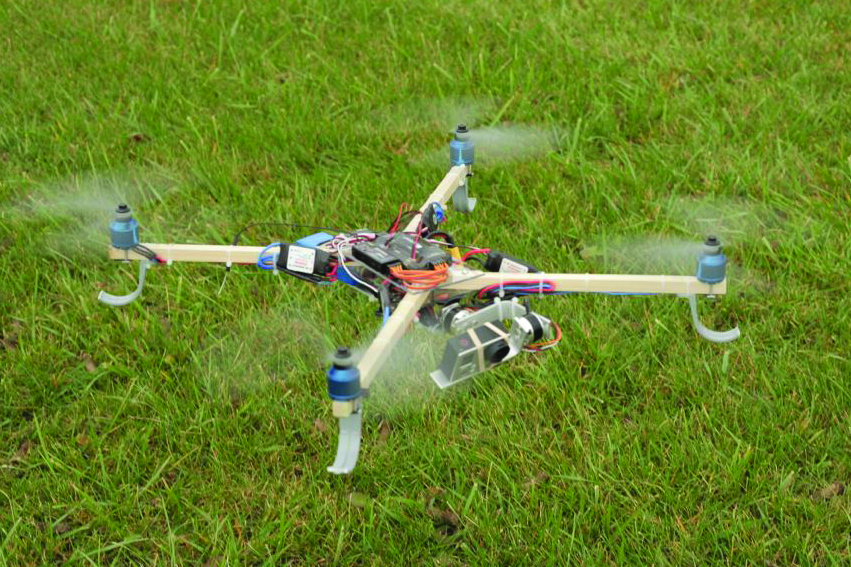Before you install the propellers, put bits of masking tape on the motor shafts to make it easy to see which way they are spinning. From above, motors 3 and 4 should spin clockwise, and motors 1 and 2 counterclockwise. If a motor is reversed, simply swap any 2 of the 3 leads connecting it to the ESC.
WARNING:If you need to reverse a motor, be sure to swap the motor control leads only, not the ESC power hub leads. Don’t ever reverse the power connections on an ESC!
The most important factor for steady flight is balanced props! There are lots of tricks for doing this, but the simplest involves sanding the heavier side of each blade until the prop balances level on a horizontal shaft. (Sand only the flat, not the leading or trailing edges).
Once the props are balanced, install them on the shafts and tighten the nuts. You’ll use 2 conventional airplane “tractor” props and 2 reverse-pitched “pusher” props. Motors 1 and 2 take tractor props, and motors 3 and 4 take pusher props. (If you’re not using the APM flight controller, your prop configuration may be different.) Once you’ve got it right, mark the number and direction of rota-
tion for each motor on its boom for easy reference.
Make sure the props are balanced, the parts are securely fastened, and none of the props, gyros, or controls are reversed. Verify that all your radio trim settings are at zero (if you have to trim, do it through the APM, not the radio). Wait for wind-free conditions to actually make the first flight.






